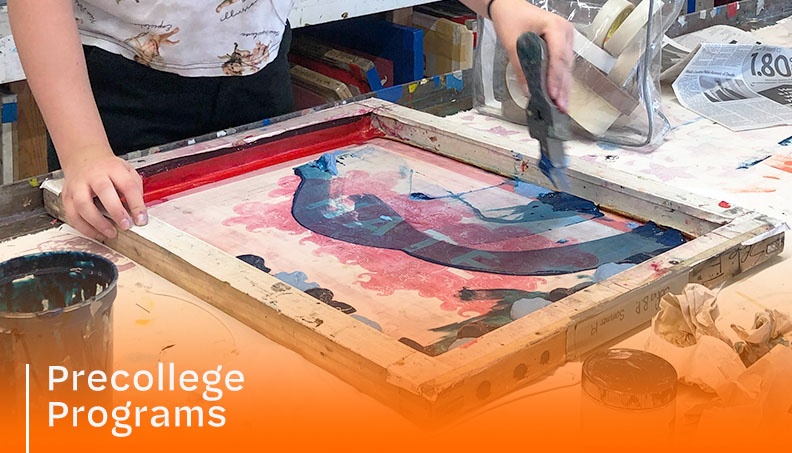The Necessary Overview to Understanding Screen Printing and Its Versatile Uses
Screen printing has an abundant history that goes back to old times, progressing right into an innovative technique made use of across various industries today. This guide explores the intricacies of the screen printing procedure, detailing its applications in marketing, home, and style design - 10:9 Design reviews. Comprehending these principles can open up imaginative potential for both industrial and creative jobs. The complying with areas will certainly reveal necessary ideas and strategies to improve one's screen printing undertakings
The History of Screen Printing
Screen printing has origins that trace back centuries, its evolution shows the technological and artistic advancements of numerous societies. Stemming in old China, the method was at first utilized for embellishing fabrics and later infect Japan, where it ended up being important to Ukiyo-e woodblock printing. The method shifted to Europe in the 18th century, where it got appeal among craftsmens and commercial printers. The development of image solution in the 20th century revolutionized screen printing, enabling for even more complex styles and greater efficiency. Musicians like Andy Warhol even more moved its popularity, using the medium to produce legendary jobs that blended commercialism and fine art. By the late 20th century, screen printing had developed itself as a flexible technique, used in vogue, advertising and marketing, and art. Today, it proceeds to advance, integrating electronic innovation and broadening its applications across different markets.
The Screen Printing Refine Explained
Screen printing transforms artistic visions right into tangible designs with a series of precise actions. A picture is produced and then transferred onto a screen, commonly made of great mesh textile stretched over a structure. A light-sensitive solution is related to the screen, which is revealed to light, hardening in locations not covered by the picture. After rinsing the unhardened solution, a pattern is formed.
Next, the screen is put over the substratum, whether it be material, paper, or another material. Ink is after that pressed with the open areas of the stencil using a squeegee, transferring the design onto the substratum listed below. This procedure can be duplicated for numerous shades, needing different screens for every color. The published thing is healed using heat to guarantee the ink sticks appropriately, resulting in a sturdy, lively design ready for use.
Sorts Of Screen Printing Techniques

Additionally, specialized methods, such as discharge screen printing, remove dye from the fabric to develop softer prints, while foil screen printing uses metal foil to attain a glossy finish (10:9 Design Company). Each technique uses distinctive attributes, providing to various imaginative requirements and manufacturing scales, eventually increasing the possibilities within the screen printing domain
Applications of Screen Printing in Different Industries

Additionally, the signage and marketing markets use screen printing for creating distinctive displays and banners. This approach permits for vibrant shades and elaborate designs that catch focus. In electronic devices, screen printing is employed for using conductive inks to circuit boards, crucial for element links. Furthermore, the home design sector accepts screen printing to produce unique styles on textiles and wall art. Generally, screen printing functions as a critical tool throughout varied areas, enhancing products with personalized and aesthetically attractive graphics.
Tips for Successful Screen Printing Projects
While taking on a screen printing job, careful interest to information can considerably boost the last result. Choosing top quality products is necessary; this includes the screen, inks, and substrates. Using ideal mesh matters can influence ink deposition and information resolution. Preparation is similarly crucial; complete cleaning of screens and correct direct exposure times guarantee crisp prints.
Next, accurate registration is important for multi-color prints. Utilizing positioning devices can assist accomplish exact layering. Furthermore, testing prints on scrap materials before manufacturing aids recognize potential concerns without throwing away sources.

Often Asked Concerns
What Materials Are Finest for Screen Printing on Material?
Cotton and polyester blends are excellent for screen printing on fabric due to their longevity and ink absorption. In addition, specialty materials like silk or canvas can produce one-of-a-kind appearances and coatings, improving the general design quality.
How Do I Tidy and Maintain Screen Printing Tools?
To clean up and maintain screen printing tools, one must on a regular basis clean screens with suitable solvents, evaluate mops for wear, oil relocating components, and shop all products in a completely dry, dust-free setting to prolong their life-span.
What Are the Environmental Impacts of Screen Printing?
Screen printing can have significant ecological effects, including chemical waste from solvents and inks, water usage throughout cleaning procedures, and energy consumption. Eco-friendly materials and lasting methods are vital for minimizing these unfavorable results.
Can Screen Printing Be Done at Home Successfully?
Screen printing can be properly done at home with the ideal products and strategies. Enthusiasts can develop quality prints, though success depends on their ability level, devices, and understanding of the procedure included.
What Are the Prices Connected With Beginning a Screen Printing Business?

Starting a screen printing business includes expenses for tools, materials, and workspace. Preliminary expenditures generally vary from a couple of hundred to a number of thousand dollars, depending upon the range, top quality of machinery, and preferred production capability.
Screen printing has an abundant history that dates back to ancient times, developing into an advanced method made use of across numerous markets today. An additional strategy, rotary screen printing, utilizes cylindrical displays, assisting in continuous printing on material rolls, more info consequently improving performance for large-scale productions. In addition, specialty techniques, such as discharge screen printing, remove color from the textile to produce softer prints, while foil screen printing applies metallic aluminum foil to achieve a shiny coating. In the style field, screen printing is widely utilized to produce lively layouts on clothing, making it possible for brand names to display their one-of-a-kind designs. Cotton and polyester blends are optimal for screen printing on textile due to their resilience and ink absorption.